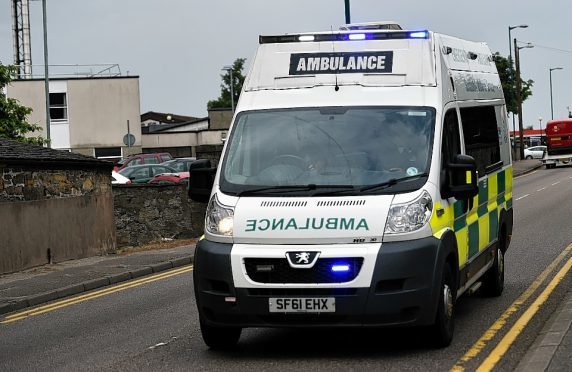Ambulance crews are missing their target response time in 90% of life-threatening emergencies in a north-east town.
Shock figures show that paramedics were only able to attend the serious incidents in Turriff within eight minutes in 13 cases out of 141 since 2016.
And the average response time to emergencies in the town this year was 20.30 minutes – more than double the wait recorded for the rest of the north region.
Last night, North East Labour MSP Lewis Macdonald said the figures proved the need for Turriff to have its own dedicated 24-hour ambulance cover.
The Unite trade union has been campaigning on the issue after highlighting that the nearest ambulances were 16 minutes away in Banff, or 28 minutes away in Huntly, or 30 minutes away in Inverurie.
Earlier this year, concerns were raised after it emerged that ambulance crews failed to meet their target response time in almost 40% call-outs to life-threatening cases in the north and north-east.
But the newly-released figures for Turriff appear far worse than the region as a whole.
The eight minute target is for “immediately life-threatening incidents” such as car crashes and heart attacks.
>> Keep up to date with the latest news with The P&J newsletter
The data also shows that the average response time to Turriff has increased from 15.38 minutes in 2013 to 20.30 minutes this year, more than double the average of 9.48 minutes across the north.
Mr Macdonald, who obtained the data, said: “These figures are very concerning and they make the case for Turriff to have its own dedicated 24-hour emergency ambulance cover.
“This is what ambulance staff and Unite trade union are calling for, and I hope that the Scottish Government will work with the Scottish Ambulance Service to ensure this happens.
“It would ensure quicker response times to the community, and reduce the pressure on those stations that are currently providing the cover for Turriff.
“Paramedics do a great job under real pressure, and it’s vital that they get the support and resources they need.”
In November 2016, the ambulance service changed its definition for Category A cases from “potentially immediately life-threatening” incidents to “immediately life-threatening incidents”, meaning fewer now fall within the eight-minute target.
In the Turriff postcode, there were 164 cases in 2014 which were classed as Category A, and required the eight minute target response, but following the change in recording, that had fallen to 59 in 2017.
Last night, a spokesman for the Scottish Ambulance Service said: “We overhauled the way we categorise patients in 2016, ensuring we provided the quickest response to those patients whose lives were at immediate risk – for patients where there is no immediate risk to life, we now focus on improving patient outcomes by sending the right, not necessarily the first, resource.
“This has enabled us to save the lives of an additional 62 patients who suffered a cardiac arrest last year.
“We closely and continuously monitor our staffing levels, through our demand and capacity review, to ensure we can provide safe patient care in all parts of Scotland and continue to invest in our workforce and we are investing in training an additional 1,000 paramedics by 2021.”
